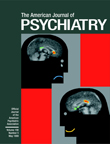Treatment of Chronic Fatigue Syndrome With Nefazodone
Mr. A was a 58-year-old white man with a 2-year history of chronic fatigue syndrome symptoms. Previous treatment with paroxetine and fluoxetine had worsened his symptoms, particularly producing greater insomnia. He received a dose of 300 mg of nefazodone for most of 12 weeks; a dose of 500 mg led to dizziness. During his period of treatment, there was a minimum change in his Hamilton Depression Rating Scale score from 11 to 9. However, his sleep showed reduced early and middle insomnia, and he could go up to 4 days with decreased pain and increase in motivation and ability to work. His natural killer cell activity improved from 26.6% to 35.6%.Ms. B was a 55-year-old white woman who was diagnosed with Epstein-Barr virus in 1991 but met criteria for chronic fatigue syndrome. She was able to sustain increases in her dose of nefazodone to 500 mg/day. Over 12 weeks, her chronic fatigue syndrome total score dropped by 15 points, with notable improvement in all areas, including fatigue, sore throat, muscle and joint pain, headaches, and sleep impairment. Simultaneously, her Hamilton rating scale score fell from 16 to 5; she was more able to reduce napping, increase leisure activity, and in particular, she was able to exercise without worsened fatigue. Her natural killer cell activity increased from 18.5% to 21%.Ms. C was a 42-year-old white woman who met the criteria for chronic fatigue syndrome, not previously treated, who took a maximum dose of 400 mg/day of nefazodone for 12 weeks. During this time, she noted an overall improvement in chronic fatigue syndrome symptoms, with a reduction in score from 22 to 17 in joint and muscle pain, as well as headaches. Simultaneously, her Hamilton rating scale score fell from 12 to 5. She completed artwork, showed improved memory, more rapidly completed tasks, and had an increase in libido. In her case, however, the natural killer cell level dropped from 22.4% to 19.4%.
References
Information & Authors
Information
Published In
History
Authors
Metrics & Citations
Metrics
Citations
Export Citations
If you have the appropriate software installed, you can download article citation data to the citation manager of your choice. Simply select your manager software from the list below and click Download.
For more information or tips please see 'Downloading to a citation manager' in the Help menu.
View Options
View options
PDF/EPUB
View PDF/EPUBGet Access
Login options
Already a subscriber? Access your subscription through your login credentials or your institution for full access to this article.
Personal login Institutional Login Open Athens loginNot a subscriber?
PsychiatryOnline subscription options offer access to the DSM-5-TR® library, books, journals, CME, and patient resources. This all-in-one virtual library provides psychiatrists and mental health professionals with key resources for diagnosis, treatment, research, and professional development.
Need more help? PsychiatryOnline Customer Service may be reached by emailing [email protected] or by calling 800-368-5777 (in the U.S.) or 703-907-7322 (outside the U.S.).

